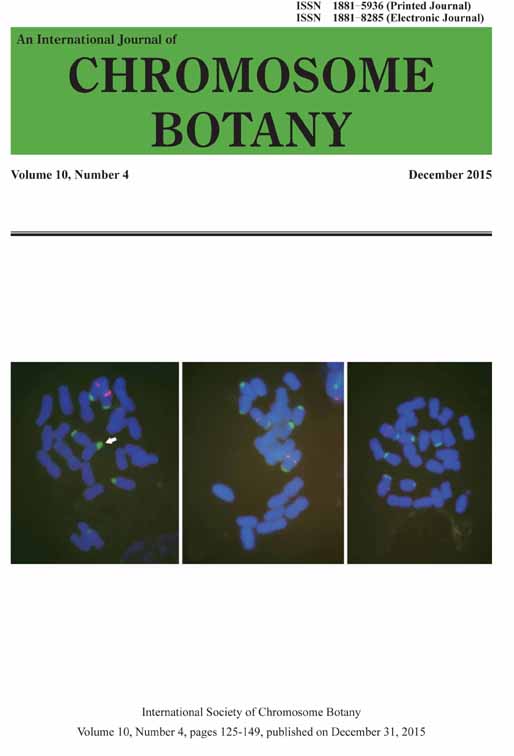Volume 10, Issue 4
Chromosome Botany Vol.10, No.4
Displaying 1-10 of 10 articles from this issue
- |<
- <
- 1
- >
- >|
Information of the Journal
-
2015 Volume 10 Issue 4 Pages A31-
Published: 2015
Released on J-STAGE: January 07, 2016
Download PDF (389K) -
2015 Volume 10 Issue 4 Pages A32-
Published: 2015
Released on J-STAGE: January 07, 2016
Download PDF (288K) -
2015 Volume 10 Issue 4 Pages A33-
Published: 2015
Released on J-STAGE: January 07, 2016
Download PDF (80K) -
2015 Volume 10 Issue 4 Pages A34-
Published: 2015
Released on J-STAGE: January 07, 2016
Download PDF (131K)
Regular Article
-
2015 Volume 10 Issue 4 Pages 125-127
Published: December 31, 2015
Released on J-STAGE: January 07, 2016
Download PDF (766K) -
2015 Volume 10 Issue 4 Pages 128-137
Published: December 31, 2015
Released on J-STAGE: January 07, 2016
Download PDF (9706K) -
2015 Volume 10 Issue 4 Pages 138-144
Published: December 31, 2015
Released on J-STAGE: January 07, 2016
Download PDF (4089K) -
2015 Volume 10 Issue 4 Pages 145-149
Published: December 31, 2015
Released on J-STAGE: January 07, 2016
Download PDF (426K)
Information of the Journal II
-
2015 Volume 10 Issue 4 Pages B31
Published: 2015
Released on J-STAGE: January 07, 2016
Download PDF (288K) -
2015 Volume 10 Issue 4 Pages B32
Published: 2015
Released on J-STAGE: January 07, 2016
Download PDF (322K)
- |<
- <
- 1
- >
- >|
